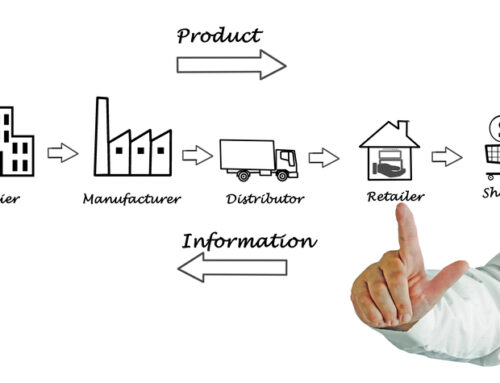Fashion works in several ways: it can help us view our bodies in a new and positive light, but it can also highlight the things we already feel are inadequate or unattractive about ourselves. Nowhere is this dichotomy more strongly felt than in the fitting room.
We’ve all been there. We spot a cute top on a mannequin as we stroll past the store, or maybe we search for hours to find a dress that makes an impression and showcases our style and personality exactly as we envision it. Everything is great until we make our way from the rack to the fitting room. What we thought was a small is too long in the arms but tight in the chest. The size 10 that fit us fine last week in a certain brand may as well be a size 2 in another. What happens next is what some call fitting room fatigue: we wind up leaving the store empty handed and disappointed in ourselves.
As frustrating as it is, women continue to do most of their shopping in mass market stores (online or inside stores). It’s easy, accessible, and familiar. But when we can’t find clothes that fit, are we really getting what we want? According to recent market research, 62% of shoppers say they that they find themselves fitting two or more different pants sizes, which means there’s only a “standard” size for about 38% of the public. So why must we struggle to find clothes that fit? Where did all this madness begin?
The answer? Vanity sizing.
What is Vanity Sizing?
While major retailers are seizing the opportunity to profit on body positivity and diversity by expanding their product lines to include larger sizes, vanity sizing has made finding the right fit more challenging than ever. Vanity sizing is when a designer uses deceptively smaller sizes to encourage the consumer to purchase the product. The problem is not that the consumer feels positive about their shopping experience, but that sizing loses all standardization in the process.
Time Magazine recently featured an article where women’s sizes were compared across several decades. The results were startling. For example, a size 8 in 1958 with a 31” bust and a 32.5” waistline is the equivalent of today’s size 00. Moreover, the same article documented how two different brands of jeans can vary as much as 6 inches in the waist, while still being labeled a size 6.
As one journalist puts it, vanity sizing continues to work because we’re all a little bit vain. When we’re at the mall and trying on that sophisticated tunic or stylish skirt, we don’t just look at the price tag. We look at the size, too. So if shoppers are annoyed with the inconsistencies, why is there little being done to alter these methods? What can buyers do to battle their frustrations and fight for the perfect fit?
Four Tools To Combat Vanity Sizing
- If you like the hunt or find immediate satisfaction in off-the-rack shopping, take note of what brands fit and which ones don’t. Keep a list on your phone, and take note of differences in categories of clothes inside of brands (e.g. “In Ann Taylor pants I wear a 10 but in tops I wear a 6”). This will eliminate some frustration when browsing for new clothes, particularly online. Shop based on both consistency and quality. If something fits great but only lasts a few months, it may not be worth your money.
- Begin a relationship with a local tailor. If you find a garment you love but something about the fit doesn’t work as well as you would like, let a professional adjust it to your measure. This solution only works if something is too large or too long – machine made clothing doesn’t leave much room for alteration so if something is already too small, there may be no way to alter it to fit. However, mass market fashion relies on the appeal of low prices and instant gratification; by employing a tailor, you may wind up paying more for your garment, and the process could take several weeks (so not really all that “fast and cheap” after all).
- Use technology to filter. There are a number of apps and sites now that let you scan your body and create a profile that will help you sort through thousands of products that are unlikely to fit. One company Fit:Match has popup stores in malls where you can fill out a complete profile and get a 360 scan. The drawback on recommendations engine technology is that it relies on algorithms to match your body to the information they are provided by brands, which may be incomplete or inaccurate. You may be missing out on some items that will fit, and there are sometime “false positives” in the matches.
- Ditch sizing altogether and just have things made custom! When you purchase your wardrobe from made-to-measure designers like those featured on Balodana, everything is “Size You”. You’ll find the latest fashions, plus designs that you might not otherwise discover. Not only will your clothes fit and feel fantastic, but your purchase will support small businesses who employ ethical practices that are considerate of both people and the planet.
If all this talk of sizes and fit has you frustrated, you’re not alone. In our research, 75% of women surveyed said they were frustrated with navigating sizes in clothes shopping. So that means 75% of women could be happier if they just had an easier time finding clothes to fit! If you’re ready to give made-to-measure a try, here’s how to get started:
I Want to Try Made-to-Measure Clothing. Where do I start?
The simplest answer is to begin with your measurements. Fortunately, most of us don’t think of measurements the same way we do sizes – a 34 or 40 inch bust isn’t a small or large, and 46 inch hips doesn’t equal plus sized. For optimum comfort and fit, be honest about your numbers. Bespoke and made-to-measure clothing is one size fits YOU. If you like things to fit a little looser in some areas, it’s fine to pad it a little bit when you’re ordering – or just tell the tailor how you want things to fit your body parts.
Balodana has created a guide to help you take your measurements. Some designs require just a few numbers, which are simple to measure yourself or with a friend or family member. If you’re feeling unsure of going it alone, a local tailor can assist you in gathering your information. The fee for this service is usually $10-$20, and many dry cleaners will do it for free. You can print out the Balodana measuring profile PDF to bring along so that you can verify or tweak anything before you enter it into your Balodana personal profile. You can update your measurements on Balodana at any time.
Generally speaking, you only need to take your measurements once. Most areas such as your height, shoulder width, arm length, etc. don’t change. You may want to double check the hips, waist and bust if it’s been more than a few months since your last order. Moreover, most bespoke and made-to-measure designers are familiar with how women’s bodies fluctuate; they leave room or extra fabric in their designs so the garments can be retailored later to ensure a proper fit, and some of them will build in extra fabric upon request in case you gain weight. And once you’ve built a relationship with one or more of Balodana’s designers, they’ll have your personal pattern in their system for reference too.
***
The point of fashion is to make us feel good, to allow us to show the world who we are. Vanity sizing can be viewed as a misguided attempt to accomplish this, while requiring as little effort as possible on the part of the manufacturer. The additional effort of finding a perfect fit falls to the consumer.
With the world becoming increasingly educated on topics like gender fluidity, human diversity, and body positivity, women are exploring new ways to convey their identities through what they wear. Made-to-measure addresses the problem of vanity sizing by changing not only how we shop, but how we view our bodies in relation to size. It’s not vain to feel confident, and it’s definitely overdue for women who’ve been gaslighted by bogus sizing for decades.
References
https://time.com/how-to-fix-vanity-sizing/
https://www.cnn.com/2018/10/13/business/walmart-eloquii-plus-size-clothing/index.html
https://knowledge.wharton.upenn.edu/article/major-brands-plus-size-clothing/
Balodana survey “Custom Clothing in a Post-Covid America” (2020)



